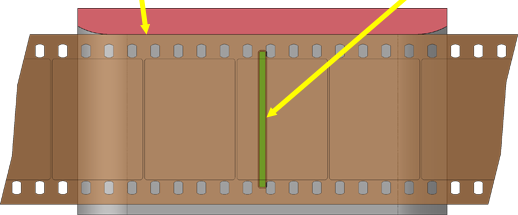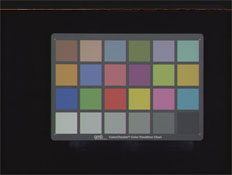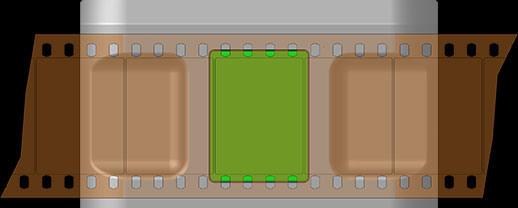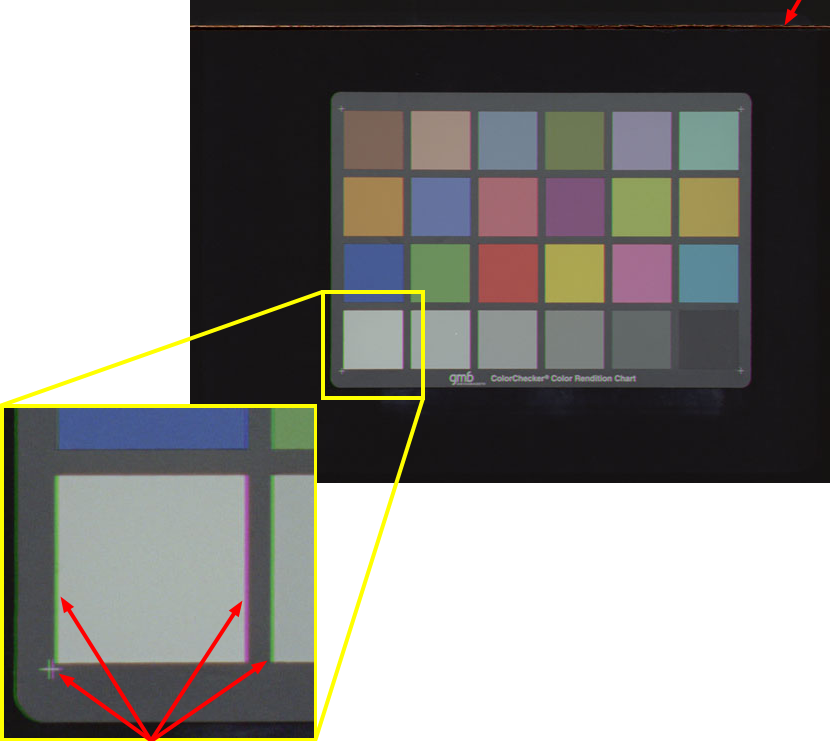Edge-guided
Film registration with traditional telecines and real-time scanners is achieved by aligning the edge of one side of the film against the edge of the gate.

However, motion picture cameras do not use the edge of the film while exposing. Instead, they use the film perforations. The spacing between the edge of the film and the perforations is not well controlled by film manufacturers. The SMPTE 93-2005 specification for 35mm film dimensions allows for a margin of ±2 mils between the perforations and the edge. This corresponds to an error of ±4 pixels at 2K resolution.
In addition, edge-guided film registration has poor splice tolerance.

Mechanical pin registration
Film scanners that directly use the perforations of the film to align each frame separately improve alignment accuracy to approximately 1/5 of one 2K pixel. This represents an improvement in stability of over 20 times compared to edge-guided telecines and telecine-like scanners.

Optical pin registration

Lasergraphics' proprietary 2D optical pin registration system locates up to 8 perforations and is able to register the frame even if only one of the perforations is usable. The frame is stabilized in the X, Y, and rotation axes. Therefore, shrunken film can be effectively stabilized with no mechanical or software adjustments. All optical pin registration is performed during the scanning process, eliminating the need for any post-processing.
Lasergraphics scanners are highly immune to perforation damage and splices while maintaining registration. Lasergraphics' 2D optical pin registration detects the location of all of the holes and then determines which ones are damaged. The damaged ones are ignored while the undamaged ones are used to align the image.

